Disclosure: This article contains affiliate links. We may earn a commission from purchases at no extra cost to you, which helps our travel content.
The first time I visited Seoul was fifteen years ago, armed with my father's old Nikon and absolutely no Korean vocabulary. What began as research for a client's website turned into a love affair with this captivating metropolis where centuries-old palaces stand in the shadow of gleaming skyscrapers. Seoul is a photographer's paradise – a city that juxtaposes the ancient and futuristic in ways that continually surprise even the most seasoned traveler. This spring, I returned with my trusty Canon EOS R5 to document the city's most photogenic corners during cherry blossom season. What follows is my carefully curated guide to Seoul's most Instagram-worthy locations, complete with timing tips and technical suggestions to help you capture that perfect shot. Whether you're wielding a professional camera or simply your smartphone, these ten locations will fill your feed with images that tell the story of this fascinating South Korean capital.
Gyeongbokgung Palace at Golden Hour
Of Seoul's five grand palaces, Gyeongbokgung reigns supreme both historically and photographically. Built in 1395 as the main royal palace of the Joseon dynasty, its name translates to 'Palace Greatly Blessed by Heaven.' While magnificent at any hour, photographers should aim for the golden light of late afternoon when the traditional hanok architecture practically glows.
The changing of the royal guard ceremony (held daily at 10am and 2pm) offers spectacular photo opportunities with guards in vibrant traditional costumes performing choreographed routines. Position yourself near Gwanghwamun Gate about 20 minutes before the ceremony begins to secure an unobstructed view.
For architectural photographers, the palace's reflection in the still waters of Hyangwonjeong Pavilion creates stunning symmetrical compositions. I spent nearly an hour here with my wide-angle lens waiting for the perfect moment when the light hit the wooden structure while a gentle breeze created subtle ripples in the water.
During cherry blossom season (typically early April), the contrast between the pink blossoms and the traditional colorful painted woodwork creates a composition that practically demands to be photographed. Visit on a weekday morning to avoid the weekend crowds that can make clean shots nearly impossible.
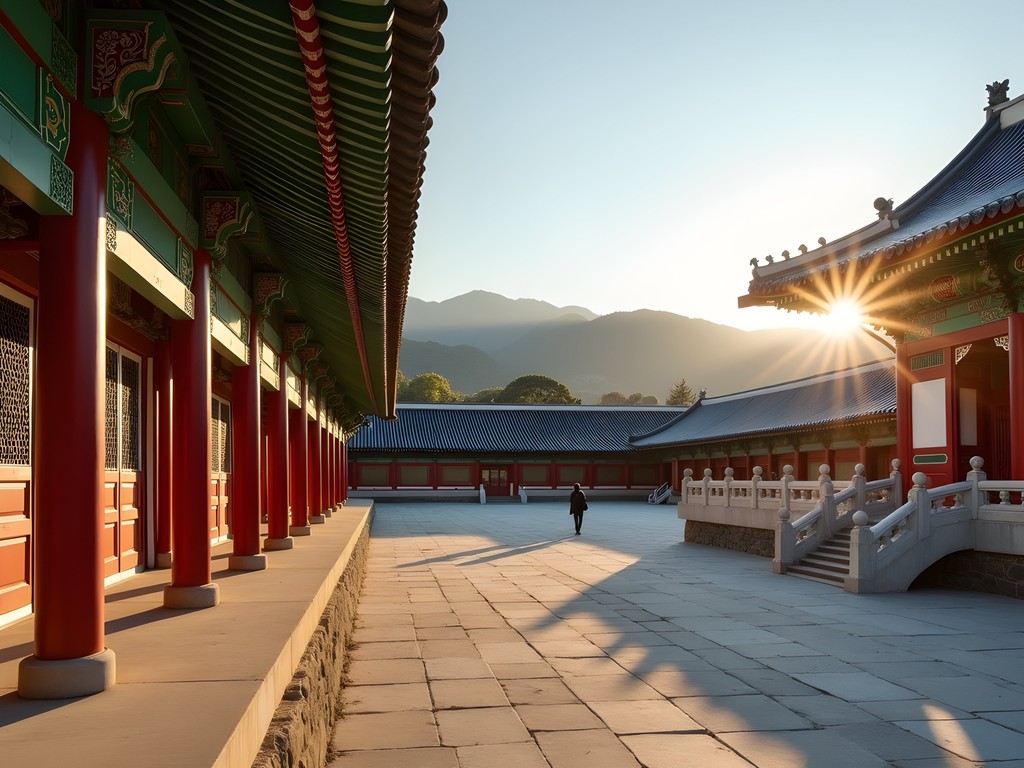
💡 Pro Tips
- Purchase tickets online to avoid queues and enter right when they open at 9am for fewer crowds
- Tripods are permitted in most areas but not during busy periods
- Rent a hanbok (traditional Korean attire) nearby for more authentic and popular photos
Bukchon Hanok Village's Winding Alleys
Nestled between Gyeongbokgung and Changdeokgung palaces lies Bukchon Hanok Village, a residential area where hundreds of traditional Korean houses (hanoks) have been preserved amid Seoul's relentless modernization. The neighborhood's narrow alleyways and traditional tiled rooftops create a visual journey into Korea's past that contrasts beautifully with the modern city skyline visible in the distance.
While the entire neighborhood is photogenic, the money shot is found at the top of the hill on Gahoe-dong 31 alley, where the sloping streets reveal layers of traditional tiled rooftops with Seoul Tower perched on Namsan Mountain in the background. This spot gets incredibly busy, so arrive by 8am to capture it without throngs of tourists.
Photographically speaking, the interplay of light and shadow in these alleys changes dramatically throughout the day. Early morning creates long shadows and dramatic directional light, while midday offers even illumination that highlights architectural details. I prefer shooting here with a versatile zoom like my travel zoom lens which lets me quickly adapt to the confined spaces while still capturing architectural details.
Remember that Bukchon remains a residential neighborhood. Local residents have become increasingly frustrated with inconsiderate photographers, leading to restrictions in some areas. Always be respectful, keep your voice down, and avoid photographing residents without permission.
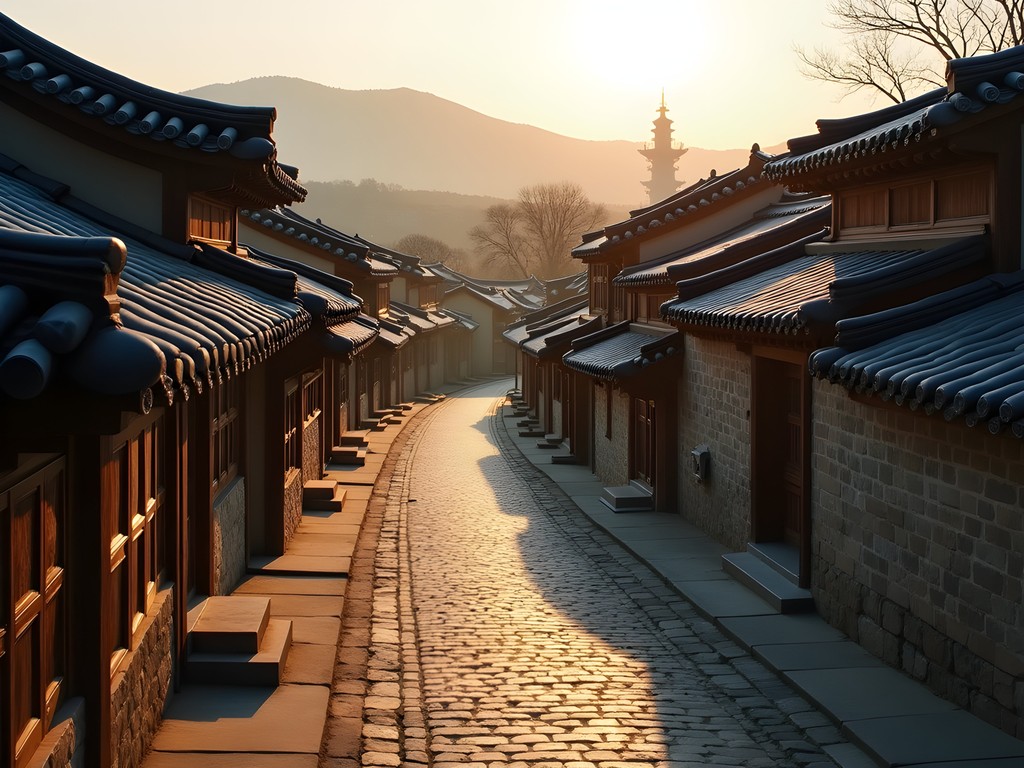
💡 Pro Tips
- Visit on weekday mornings before 9am to avoid crowds
- Use a 35mm or 50mm focal length to capture the feel of the narrow alleys
- Look for traditional door decorations and architectural details that tell stories about the homes
Dongdaemun Design Plaza's Futuristic Curves
When I first encountered Zaha Hadid's masterpiece, the Dongdaemun Design Plaza (DDP), I spent three hours circling its otherworldly curves with my camera. This landmark represents Seoul's commitment to design and innovation, with its distinctive aluminum exterior panels that seem to ripple and flow like liquid metal.
The DDP is particularly photogenic after sunset when the building's integrated LED lighting system transforms it into a futuristic landscape. The contrast between the illuminated structure and the night sky creates dramatic opportunities for long-exposure photography. I recommend bringing a sturdy travel tripod for these evening shots – my hand-held attempts never quite captured the building's ethereal quality.
During spring, the Rose Garden installation features thousands of LED roses that illuminate at night, creating a field of glowing flowers against the building's silver curves. This temporary installation typically runs from March through May and provides endless creative photography opportunities.
The building's interior is equally striking, with flowing spaces that challenge your sense of perspective. Wide-angle lenses work best here to capture the sweeping architectural lines. Look for interesting compositions where visitors interact with the space, providing scale and human interest against the building's massive proportions.
While professional photoshoots require permits, casual photography is welcomed throughout most of the complex. Security staff are generally helpful in pointing out particularly photogenic spots that might not be immediately obvious to visitors.

💡 Pro Tips
- Visit both during daytime and after dark for completely different photographic experiences
- Use a polarizing filter during daytime to manage reflections on the metallic surface
- Experiment with abstract architectural details that showcase the building's unique curves
Namsan Seoul Tower at Blue Hour
Rising 236 meters above Namsan Mountain, Seoul Tower offers the quintessential panoramic view of the sprawling metropolis. While many visitors head straight to the observation deck, I've found that the most compelling photographs actually come from shooting the tower itself, particularly during the magical blue hour when the city lights begin to twinkle but the sky still holds deep blue tones.
The tower is accessible via a steep hike through Namsan Park or, for those preserving energy for photography, a cable car ride that provides its own photographic opportunities as you ascend above the city. I typically pack light for this location, bringing only my camera and a travel tripod which is compact enough to carry up the mountain but sturdy enough for the long exposures needed at dusk.
For the classic Seoul Tower shot, head to the viewing platform at the cable car's upper station about 30-45 minutes before sunset. From here, you can capture the tower with the city sprawling below as the lights gradually illuminate. The challenging lighting conditions require bracketed exposures – I typically shoot three to five frames at different exposures to blend later.
Another compelling composition can be found by hiking slightly above the tower on one of the mountain trails, where you can frame the illuminated structure against the vastness of Seoul. The perspective of the tower piercing the city's sea of lights creates a powerful visual metaphor for this dynamic capital.
During cherry blossom season, the trees along the lower mountain paths frame the tower beautifully, adding seasonal interest to your compositions.
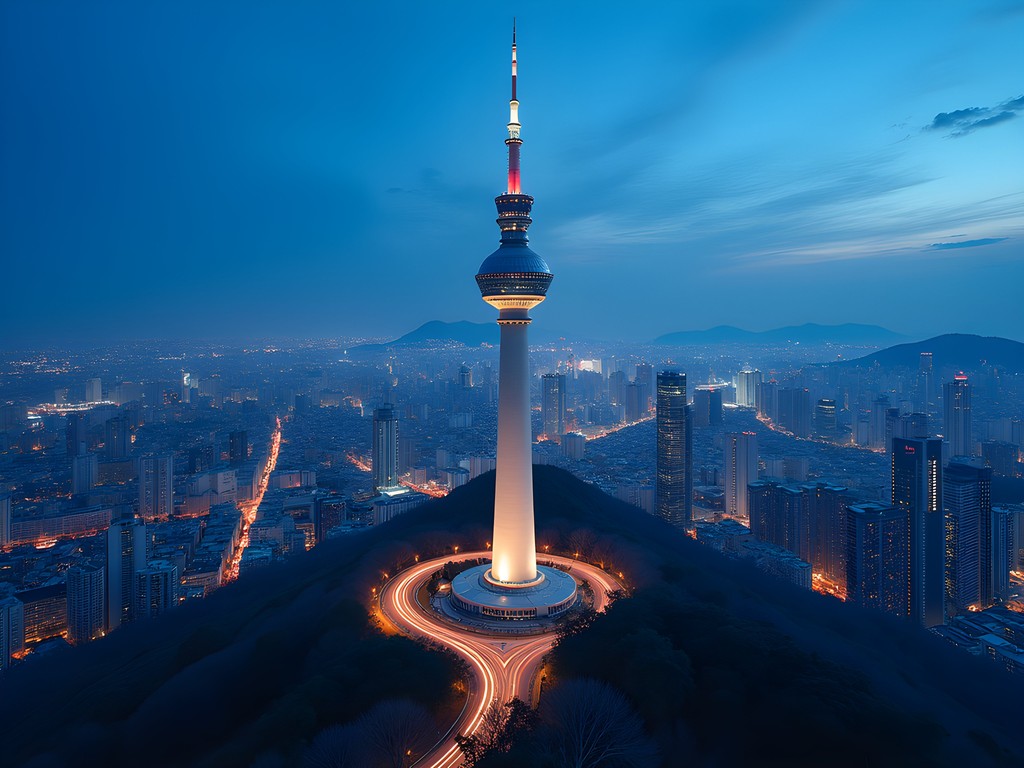
💡 Pro Tips
- Arrive 1-2 hours before sunset to scout compositions and secure a good tripod position
- Bring a zoom lens (24-70mm range works well) to frame different perspectives of the tower against the cityscape
- Check weather forecasts for clear days, as Seoul's air quality can affect visibility
Starfield Library's Instagram-Famous Bookshelves
Hidden within the massive COEX Mall in Gangnam, Starfield Library has become one of Seoul's most photographed interior spaces – and for good reason. The two-story open space features towering bookshelves that reach toward the ceiling, creating a cathedral-like atmosphere dedicated to literature. With over 50,000 books and magazines arranged in visually striking displays, the library offers countless compositional possibilities.
The most popular shot here is taken from the second floor, looking down at the central seating area with the curved bookshelves creating leading lines that draw the eye through the frame. However, this spot often has a line of photographers waiting their turn. Instead, I discovered equally compelling compositions by exploring the side areas where the interplay of readers, architecture, and books created more authentic scenes.
Lighting presents the biggest challenge here. The space is illuminated by a combination of overhead lighting and natural light from skylights, creating mixed color temperatures. I typically set my white balance manually to around 4500K as a starting point, then adjust in post-processing. Due to the relatively dim conditions, you'll want a lens with good low-light capabilities – my prime lens performed beautifully here without requiring a tripod (which security might ask you to put away anyway).
The library is busiest on weekends and after work hours. For photographs with fewer people, visit on weekday mornings when the space has an even more serene quality. That said, including visitors in your compositions adds scale and human interest to the architectural grandeur.
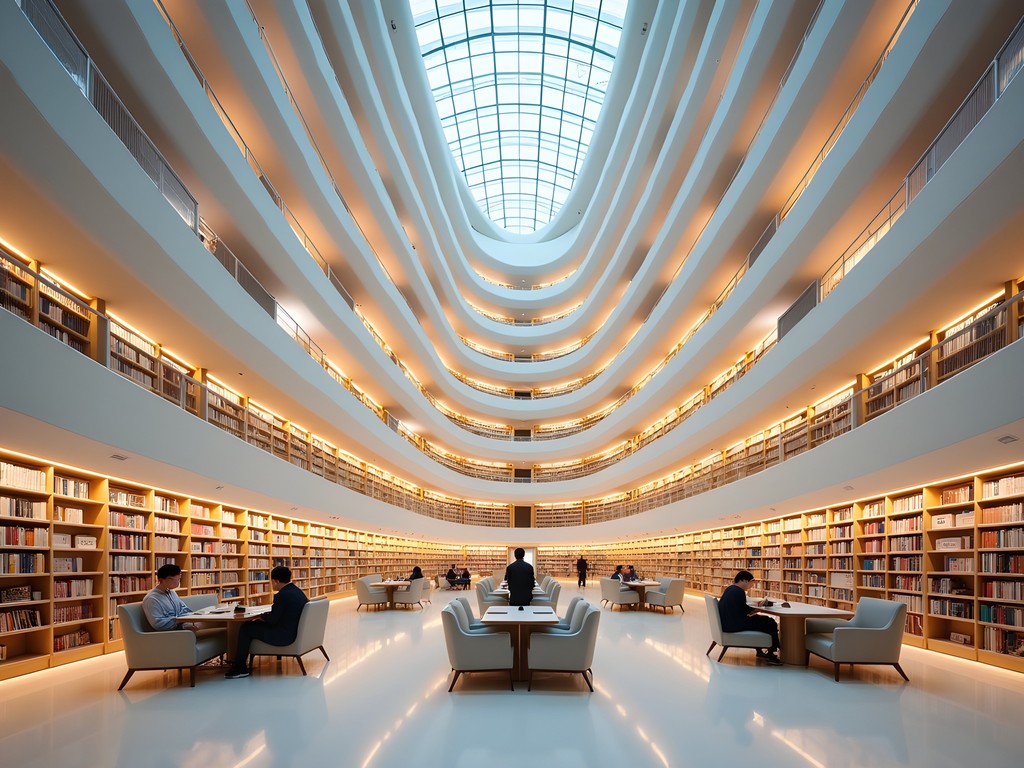
💡 Pro Tips
- Shoot between 10am-12pm on weekdays for fewer crowds
- Include people reading for scale and to create storytelling opportunities
- Look for compositions that showcase the curved lines of the bookshelves against the geometric ceiling
Ihwa Mural Village's Street Art Paradise
Perched on the slopes of Naksan Park, Ihwa Mural Village represents Seoul's artistic renaissance. What began as a neighborhood revitalization project in 2006 has transformed this once-declining area into an open-air gallery where colorful murals and installations adorn walls, stairs, and even entire buildings.
The winding hillside streets offer endless photographic possibilities, with each turn revealing new artistic surprises. The famous angel wings mural where visitors queue to pose is worth capturing, but I found more interesting compositions by exploring the quieter side streets where local life continues amid the artwork.
The hilly terrain means you'll be shooting from various elevations, often looking up or down at murals. I found a normal to slight wide-angle lens (35mm equivalent) offered the most versatility here. The neighborhood's narrow alleys sometimes make it impossible to step back far enough to capture larger works, so be prepared to photograph details or use panoramic techniques.
Lighting conditions vary dramatically throughout the day as the sun moves across the hillside. Morning light tends to be softer and more even, while afternoon creates more dramatic shadows that can either enhance or detract from murals depending on their placement. I visited multiple times during my week in Seoul, finding that each time of day revealed different aspects of the neighborhood.
Remember that this remains a residential area where people live their daily lives. Some residents have become understandably frustrated with intrusive tourism, resulting in certain murals being removed. Always be respectful, keep noise to a minimum, and ask permission before photographing people or private spaces.
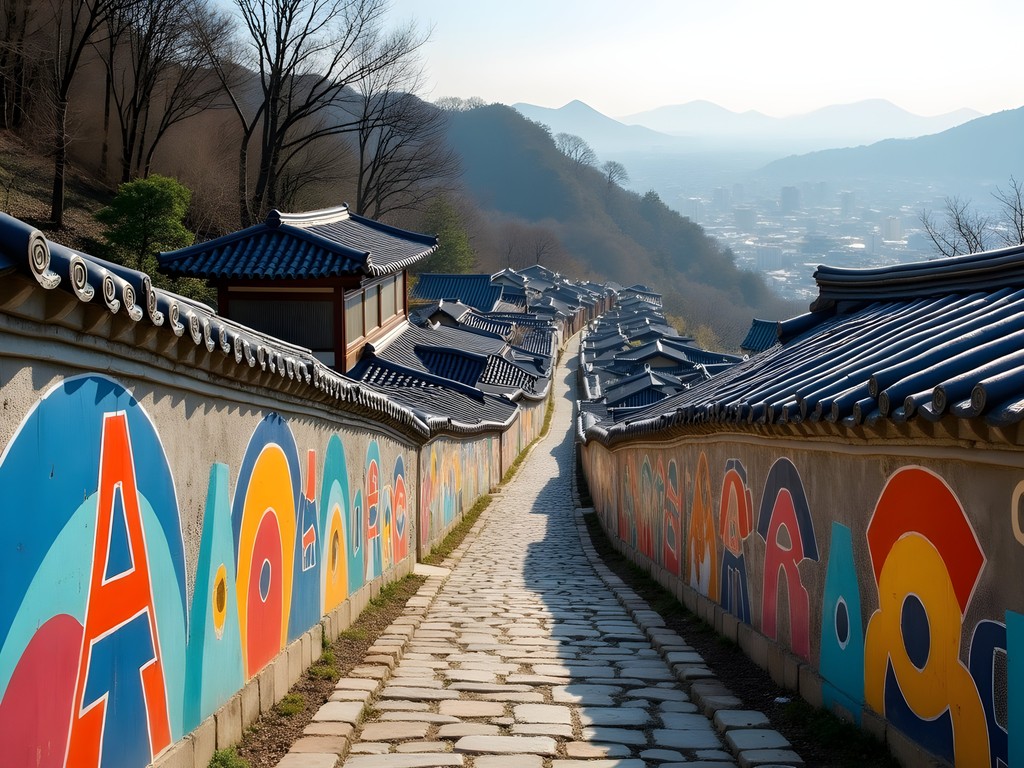
💡 Pro Tips
- Visit on weekday mornings to avoid crowds and have clearer shots of popular murals
- Look for compositions where street art interacts with everyday life
- Wear comfortable shoes – capturing the hillside neighborhood properly requires significant climbing
Seoullo 7017 Skygarden at Sunset
When Seoul transformed an abandoned elevated highway into a linear sky park, it created not just a public space but a photographer's playground. Seoullo 7017 (a name that combines Seoul with the years 1970 when the structure was built and 2017 when it was reborn) offers unique elevated perspectives of the city that weren't previously accessible to pedestrians.
The 983-meter elevated walkway is lined with 24,000 plants representing 228 species native to Korea, all arranged in alphabetical order. These plantings create natural framing elements for urban landscape photography, allowing you to incorporate nature into cityscapes. The circular plant beds also make compelling foreground elements when shooting wider city views.
Timing is everything here. While the park is beautiful throughout the day, it truly comes alive during the golden and blue hours. As the sun sets, the pathway's distinctive blue lighting system gradually illuminates, creating a glowing ribbon through the city. This transition period offers about 20-30 minutes of perfect light when the sky still holds color while the path and surrounding buildings begin to light up.
The walkway passes near Seoul Station, offering excellent opportunities to capture the juxtaposition of historic and modern architecture that defines Seoul. I found the section overlooking the station particularly photogenic, especially when framing the historic station building against the modern city backdrop.
For the best experience, I recommend walking the entire length around sunset, noting compelling compositions, then revisiting your favorite spots as the light changes. My most successful images came from staying in one location and creating a series as daylight transitioned to night.
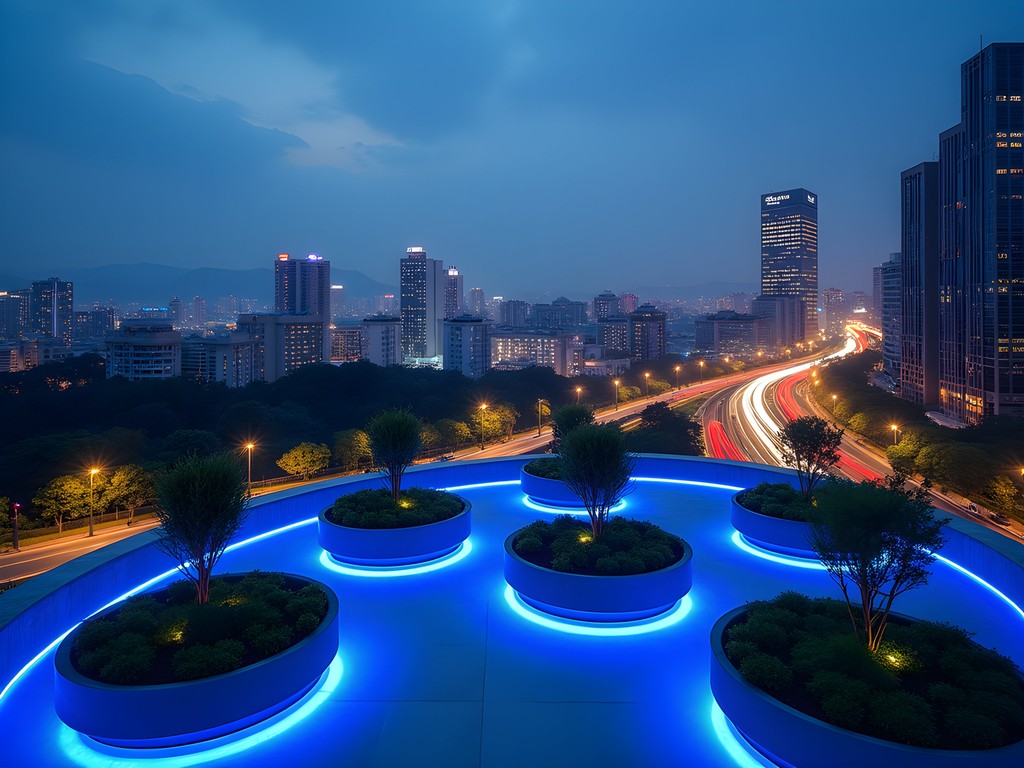
💡 Pro Tips
- Check sunset times and arrive 30-45 minutes before for ideal lighting
- Bring a variable ND filter to manage longer exposures during the blue hour transition
- Look for compositions that showcase the contrast between the planted pathway and urban surroundings
Changdeokgung Palace's Secret Garden
While Gyeongbokgung might be Seoul's most famous palace, photographers seeking more intimate and atmospheric compositions should not miss Changdeokgung Palace – particularly its renowned Secret Garden (Huwon). Unlike the more formal and symmetrical layouts of other palaces, Changdeokgung was designed to harmonize with the natural topography, creating a more organic relationship between architecture and landscape.
The Secret Garden, accessible only via guided tour, offers Seoul's most enchanting blend of natural and architectural photography. The garden covers 78 acres of landscaped grounds with pavilions, ponds, and centuries-old trees creating scenes that seem plucked from classical Asian paintings. During my visit, I found myself constantly switching between landscape and detail compositions – one moment capturing a pavilion reflected in a lotus pond, the next focusing on the intricate painted patterns beneath the eaves.
Spring brings spectacular cherry blossoms and azaleas, while autumn transforms the garden into a tapestry of red and gold foliage. I visited during early spring when the first blossoms were appearing, creating delicate accents against the traditional architecture. The garden's designed viewpoints often incorporate borrowed scenery techniques from traditional Korean landscaping, where distant mountains become part of the composition.
The guided tour format presents some challenges for photography, as you can't linger indefinitely at each location. I found it helpful to scout compositions quickly, adjust camera settings in advance, and be ready to shoot efficiently when we reached particularly photogenic spots. A zoom lens offers valuable flexibility within these constraints – I relied heavily on my 24-105mm range to quickly adapt without changing lenses.
The palace's status as a UNESCO World Heritage site means preservation takes priority over visitor convenience. Tripods are not permitted inside the buildings, though you can sometimes use them in outdoor areas if you're not blocking pathways.
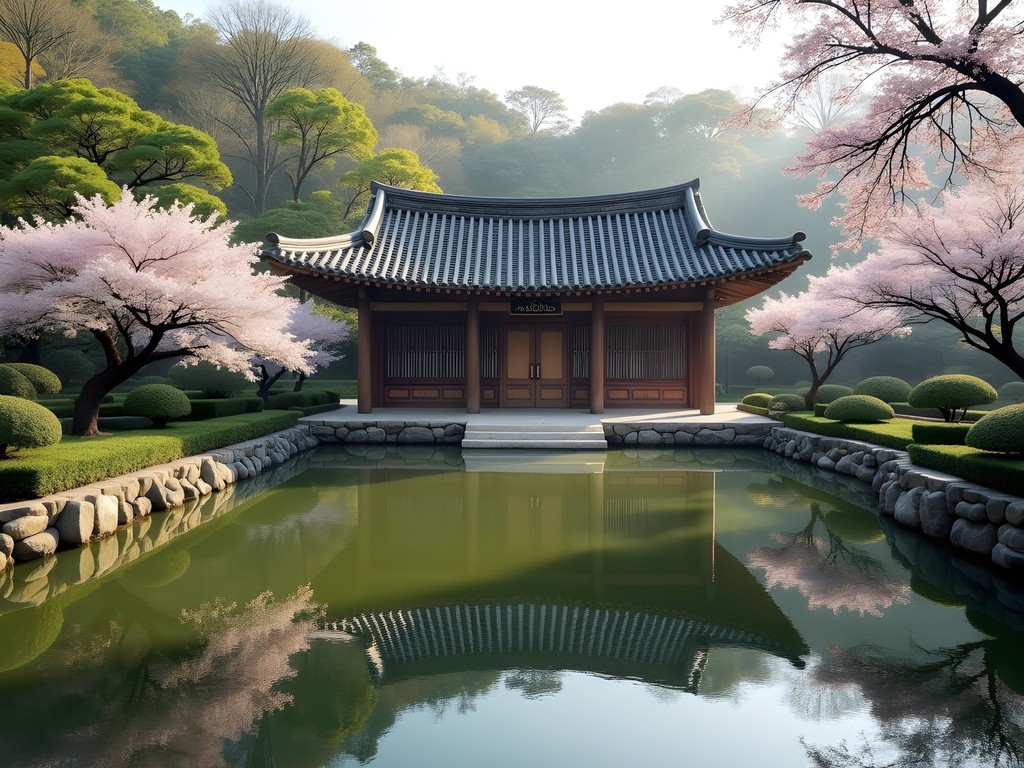
💡 Pro Tips
- Book the English-language Secret Garden tour in advance as they sell out quickly
- Visit during weekdays and choose the earliest morning tour for the best light and fewer people
- Bring a polarizing filter to manage reflections when photographing pavilions over water
Ikseon-dong Hanok Alley's Modern-Traditional Fusion
If Bukchon Hanok Village represents traditional Korea preserved in amber, then Ikseon-dong shows what happens when tradition meets modern creative energy. This compact neighborhood of hanok houses has been transformed into Seoul's hippest district, where traditional architecture houses cafés, boutiques, and art spaces.
What makes Ikseon-dong particularly compelling for photographers is the juxtaposition of centuries-old architectural elements with contemporary design sensibilities. Weathered wooden beams frame sleek café interiors; traditional tiled rooftops shelter modern art installations. These contrasts create visual stories that capture Seoul's evolving identity better than perhaps any other neighborhood.
The district's narrow alleyways form an intimate maze that rewards exploratory photography. Unlike the more tourist-oriented Bukchon, Ikseon-dong maintains an authentic lived-in quality with genuine interactions between residents, shopkeepers, and visitors. These human moments add storytelling elements to architectural compositions.
Light in the narrow alleys can be challenging, with bright patches and deep shadows creating high-contrast scenes. I often switched to manual exposure mode here, typically exposing for mid-tones and accepting some highlight clipping or shadow detail loss. The character-filled weathered textures of the hanok exteriors particularly benefit from side-lighting in early morning or late afternoon.
Many of the cafés and shops have created Instagram-worthy interior spaces that blend traditional elements with modern aesthetics. While some establishments restrict photography, many welcome it as part of their marketing strategy. When photographing interiors, I found my prime lens invaluable for working in the limited space while gathering enough light without flash.
The neighborhood is busiest on weekends and evenings when locals come for the trendy dining scene. For photography focused on architecture rather than social atmosphere, weekday mornings offer clearer compositions.
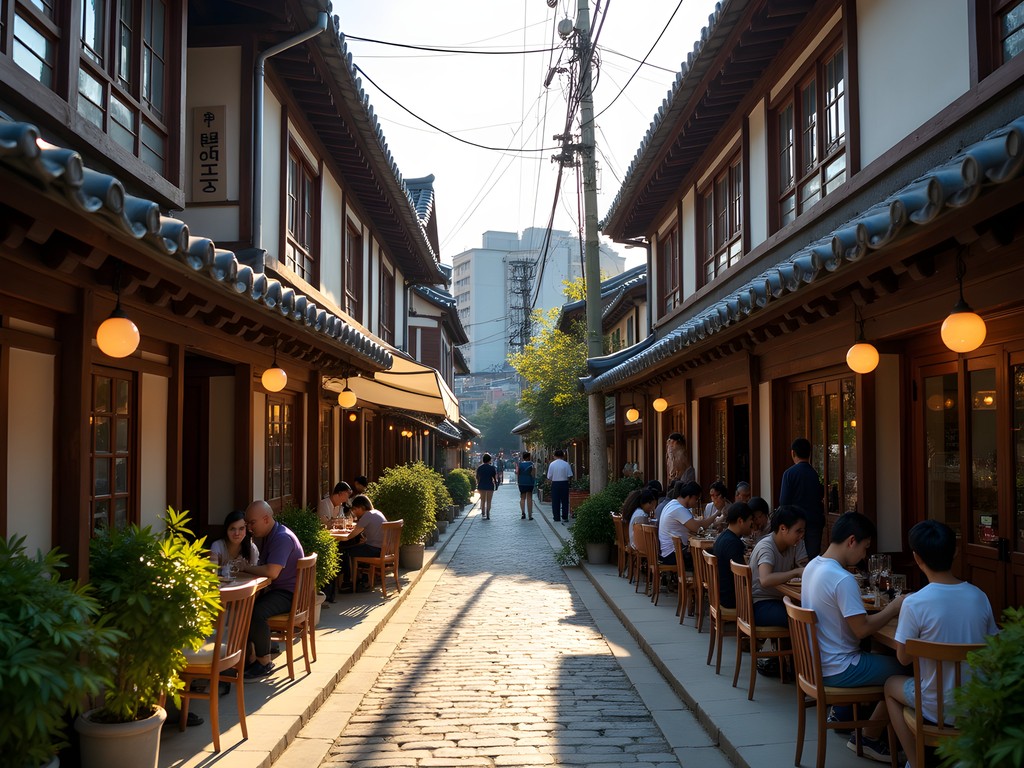
💡 Pro Tips
- Visit between 9-11am on weekdays when shops are opening but before the lunch crowd arrives
- Look for compositions that tell the story of traditional/modern fusion through visual contrasts
- Support the local businesses by purchasing drinks or food at establishments where you photograph extensively
Lotte World Tower Observation Deck for City Panoramas
Standing at 555 meters, Lotte World Tower is Seoul's tallest building and the fifth tallest in the world. Its Seoul Sky observation deck (floors 117-123) offers the most comprehensive panoramic views of the sprawling metropolis – a must-visit for any photographer seeking to capture the scale and density of this megacity.
The observation deck's completely glass walls present both opportunities and challenges for photographers. The unobstructed 360° views are spectacular, but reflections can be problematic. I found pressing my lens directly against the glass (when possible) eliminated most reflections. For situations where that wasn't possible, I used a collapsible lens hood and a small black cloth to create a reflection-free zone.
Timing your visit is crucial for optimal photography conditions. Seoul frequently experiences haze and air pollution that can diminish visibility. After monitoring air quality forecasts, I chose a day following overnight rain when the air was exceptionally clear. I arrived about an hour before sunset, allowing me to capture the city in daylight, during golden hour, at sunset, and as it transitioned to its illuminated nighttime state.
The observation deck is designed with photographers in mind, with specific photo spots marked throughout. However, these areas often attract crowds. I found equally compelling compositions away from these designated spots, particularly on the less crowded eastern side with views toward the Han River.
While smartphones can capture decent images here, the challenging lighting conditions and distance really benefit from a proper camera. I primarily used my 24-70mm zoom, occasionally switching to a telephoto to isolate distant landmarks. The tower sways slightly in strong winds, which can affect long exposures after dark. To counter this, I used slightly faster shutter speeds than I would normally choose for night cityscape photography, compensating with higher ISO settings.
The admission fee isn't cheap (around 31,000 won for adults), but the photographic opportunities justify the expense for serious photographers.
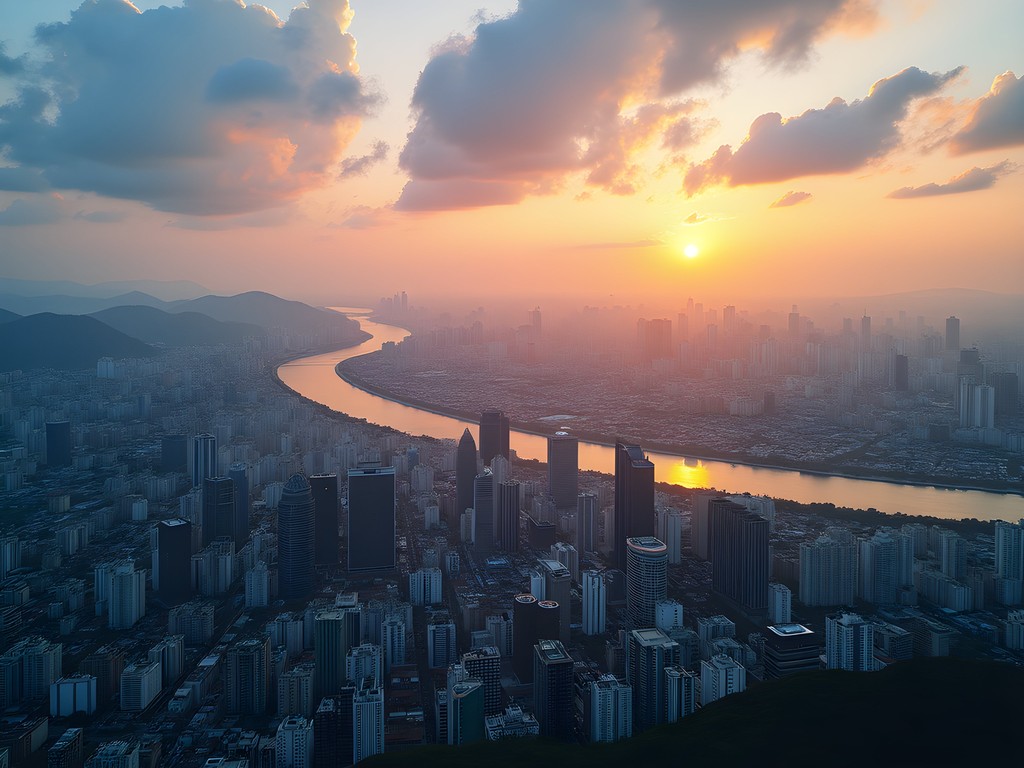
💡 Pro Tips
- Check air quality forecasts and visit on clear days, ideally after rain has cleared pollution
- Arrive 1-2 hours before sunset to capture multiple lighting conditions
- Bring a small microfiber cloth to clean fingerprints from the glass before shooting
Final Thoughts
Seoul's photographic identity emerges through these contrasts – ancient palaces against modern skyscrapers, traditional hanok houses repurposed as hip cafés, and serene gardens nestled within urban density. What makes photographing this city so rewarding is precisely this visual tension between past and future, tradition and innovation. As you explore these ten locations, you'll discover that Seoul offers far more than just Instagram backdrops – it provides visual stories about cultural preservation, rapid development, and the Korean talent for honoring history while embracing the future. Whether you're wielding a professional camera or simply your smartphone, Seoul rewards the observant photographer with compositions that couldn't exist anywhere else on earth. Just remember to occasionally lower your viewfinder and experience the city directly – some moments deserve to be captured only in memory.
✨ Key Takeaways
- Visit popular spots during early morning or weekdays to avoid crowds in your compositions
- Prepare for Seoul's dramatic lighting changes by visiting key locations during golden/blue hour
- Balance architectural photography with human elements that tell the story of contemporary Seoul
- Research seasonal highlights like cherry blossoms (spring) or autumn foliage to add natural elements to urban compositions
📋 Practical Information
Best Time to Visit
Spring (April-May) for cherry blossoms and comfortable temperatures
Budget Estimate
$100-150 per day including mid-range accommodations, transportation, and entrance fees
Recommended Duration
5-7 days to photograph all locations without rushing
Difficulty Level
Beginner

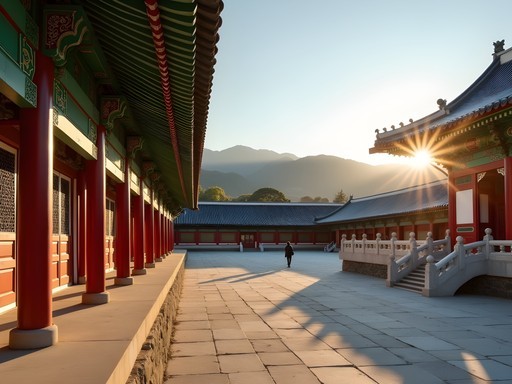




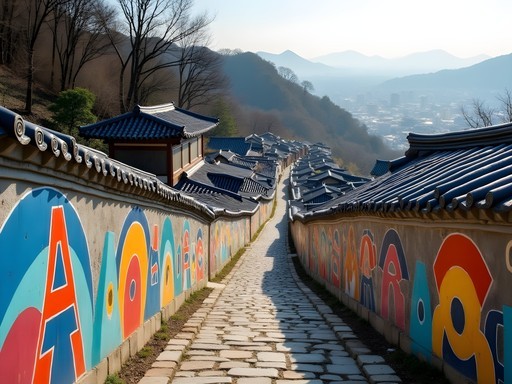



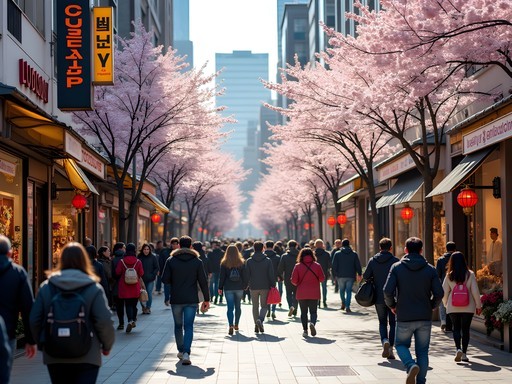
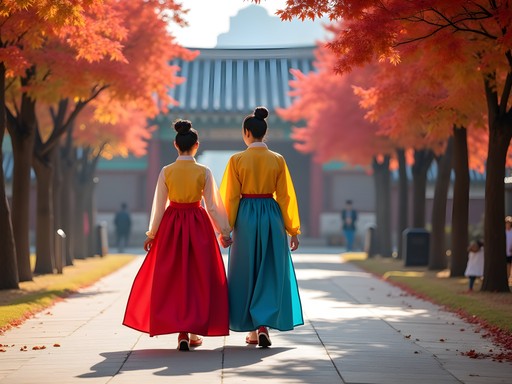



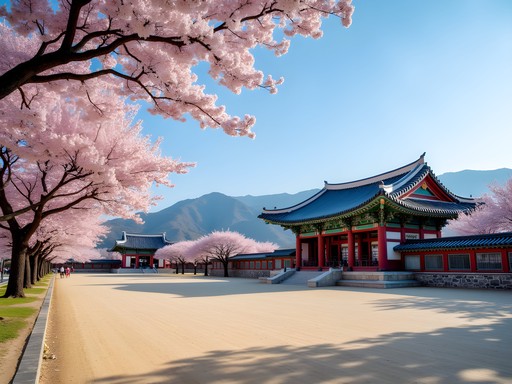
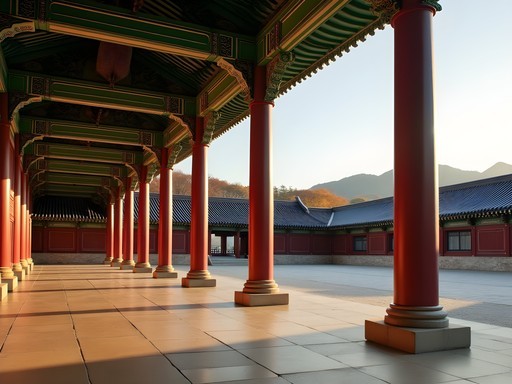
Comments
mountainlover
That shot of Bukchon Hanok Village is perfect! How early did you have to go to avoid the crowds?
Evelyn Rogers
Thanks! I was there right at sunrise, around 6:30am. The light was perfect and I practically had the place to myself for about an hour before the tour groups arrived.
mountainlover
Wow, early bird! Worth it though. Thanks!
starmate
These photos are stunning! Adding Seoul to my bucket list right now.
starbuddy
Great post! I'm planning to visit Seoul in December. Would these spots still be good for photos in winter? Especially concerned about Namsan Seoul Tower - will it be too cold to enjoy the view?
citymate
Winter in Seoul is COLD but so beautiful! Namsan has heated indoor viewing areas, so you can duck in when your fingers freeze. The snow on the traditional rooftops makes for amazing photos too.
Hunter Thompson
December in Seoul is magical! The city goes all out with holiday lights, especially around Cheonggyecheon Stream. Just layer up!
Hunter Thompson
Brilliant post! I spent 3 weeks in Seoul last summer and can confirm these spots are absolute gold for the 'gram. The Dongdaemun Design Plaza at night is otherworldly - feels like you've stepped onto a spaceship! If you're into street photography, I'd add Ikseon-dong to this list. It's this maze of narrow alleyways with traditional hanok buildings that have been converted to trendy bars and cafes. The contrast of old and new is stunning, especially with my mirrorless camera which handled the low light in the alleys brilliantly. The locals were super friendly about being photographed too, unlike some other Asian capitals I've visited.
citymate
Just got back from Seoul last month and hit most of these spots! Gyeongbokgung Palace at golden hour is absolutely magical - the light hits those traditional rooftops perfectly. One tip though: if you're serious about photos, go on a weekday. We went on Saturday and it was PACKED with tourists. Also found a cool coffee shop near Bukchon Hanok Village that had the most perfect view of the alleyways from their rooftop.
mountainlover
What's the name of that coffee shop? Heading there next week!
citymate
It's called Cha Masineun Tteul (차 마시는 뜰). A bit hidden but worth finding!
nomadmate
Just got back from Seoul last week and followed your recommendations! Dongdaemun Design Plaza at night was even more impressive than your photos show. The LED roses were on display when I visited and it was magical. One place I'd add to your list is Common Ground (the blue container mall) - super photogenic and great for fashion shots. Also found that early mornings (like 6-7am) at Gyeongbokgung were perfect for photos without crowds. Thanks for the inspiration!
photoace
Thanks for the Common Ground tip! Adding it to my list for next month.
freewanderer9399
Which spot was your absolute favorite for sunset photos? Going next month and I can probably only fit in one evening shoot.
Evelyn Rogers
If you can only do one sunset location, make it Namsan Seoul Tower! The views over the entire city as the lights come on are unbeatable. Get there about 45 minutes before sunset to secure a good spot. The cable car ride up is also great for photos!
Oliver Duncan
Evelyn, your post brought back so many memories! When I was backpacking through Asia on a budget last year, Seoul was a highlight despite my concerns about costs. For budget travelers reading this: you can actually visit most of these Instagram spots without breaking the bank. The Seoul Metro is incredibly affordable and efficient for reaching all these locations. I stayed at a guesthouse in Hongdae (great for nightlife photos too!) and bought a T-money card for transportation. The palaces have free admission if you wear hanbok, which many rental shops offer for around 15,000 won. And don't miss Ihwa Mural Village - it wasn't on your list but offers amazing photo ops with street art and city views, completely free to visit! The contrast between old and new that you mentioned really is what makes Seoul so photogenic.
wanderstar5931
Did you feel safe walking around with expensive camera gear? First-time visitor here and I'm debating whether to bring my DSLR or just use my phone.
nomadmate
Not OP but Seoul is super safe for photographers! I walked around with my camera backpack everywhere, even late at night. Just be mindful of your gear on the subway during rush hour like you would in any big city.
Evelyn Rogers
Absolutely agree with @nomadmate - Seoul is one of the safest major cities I've photographed in. Bring your DSLR, you won't regret it, especially for the night shots at Dongdaemun Design Plaza and Namsan Tower!
Charlotte Watkins
What a wonderful guide, Evelyn! I took my family to Seoul last spring and Bukchon Hanok Village was our absolute favorite photo spot. My teenage daughter couldn't get enough of the traditional hanbok rentals - we spent an entire afternoon dressed in traditional Korean clothing wandering those beautiful alleys. One tip for families: arrive at Bukchon early (before 9am) if you want those empty street shots. By 10am, the tour groups arrive and it gets quite crowded. Also, some residents have put up signs requesting quiet as it is still a living neighborhood. We found the small traditional tea houses tucked away on the side streets made for both great photos and a welcome rest from walking those hills!
Venture X
Premium card with 2X miles, $300 travel credit, Priority Pass